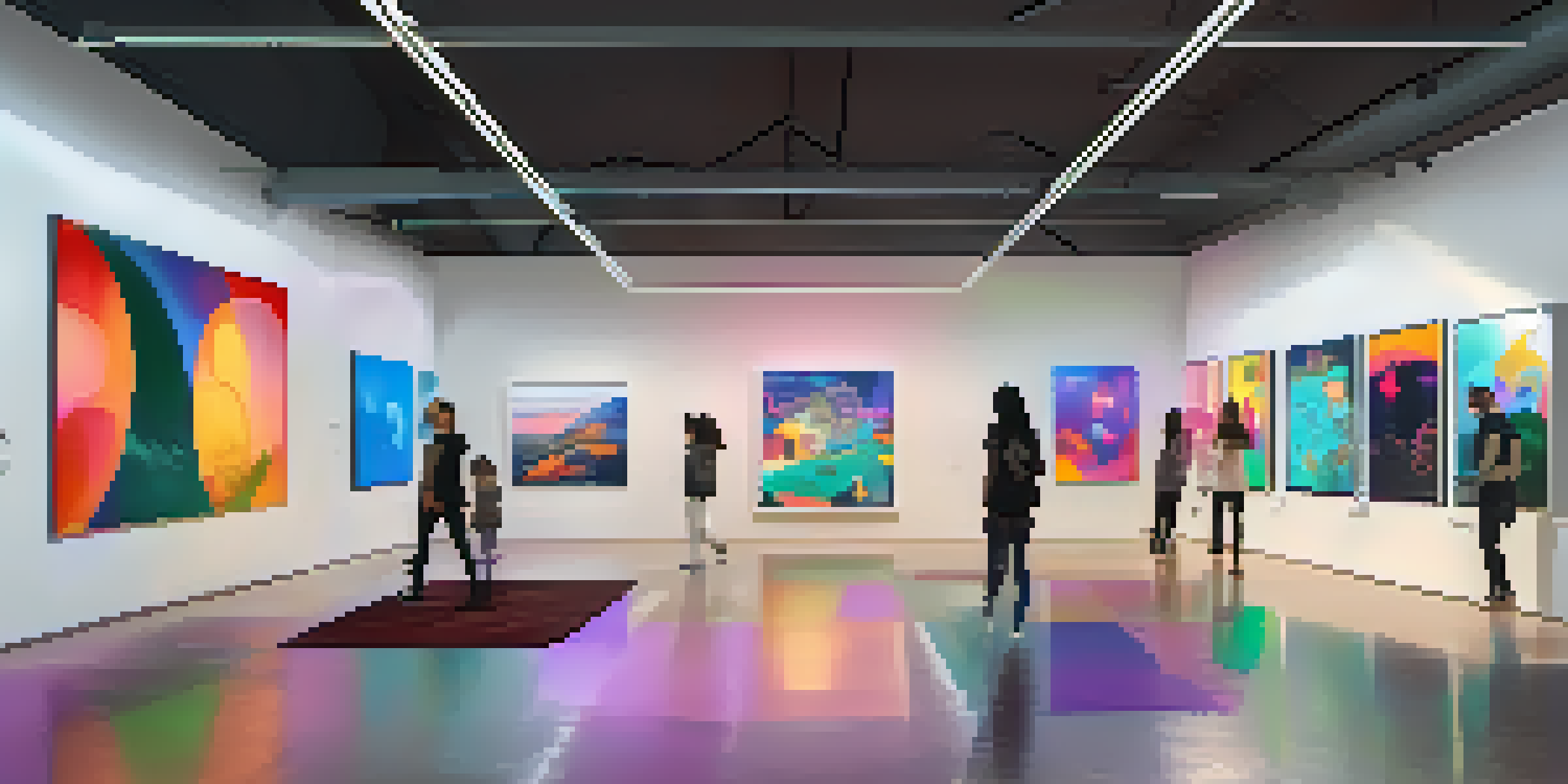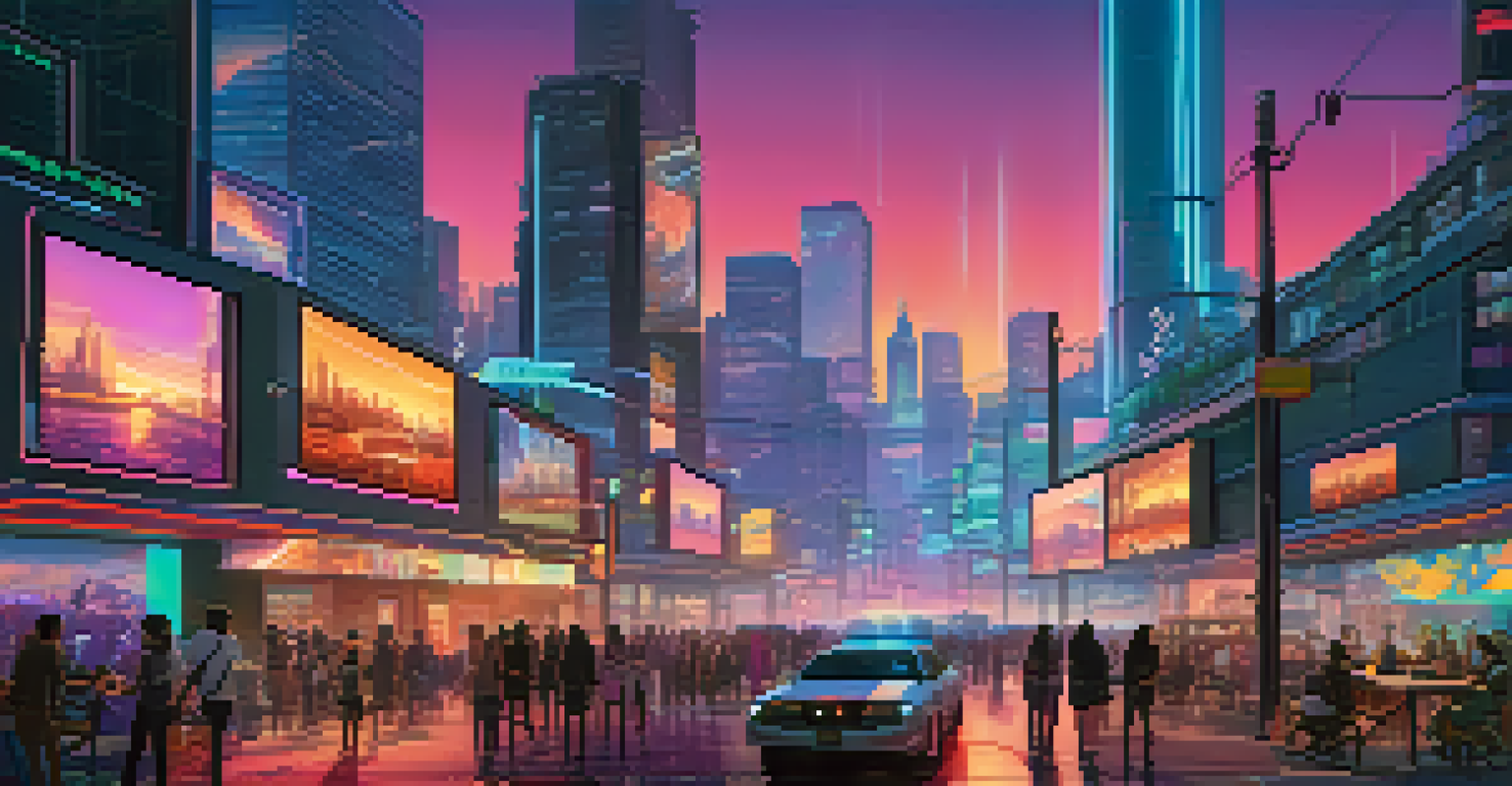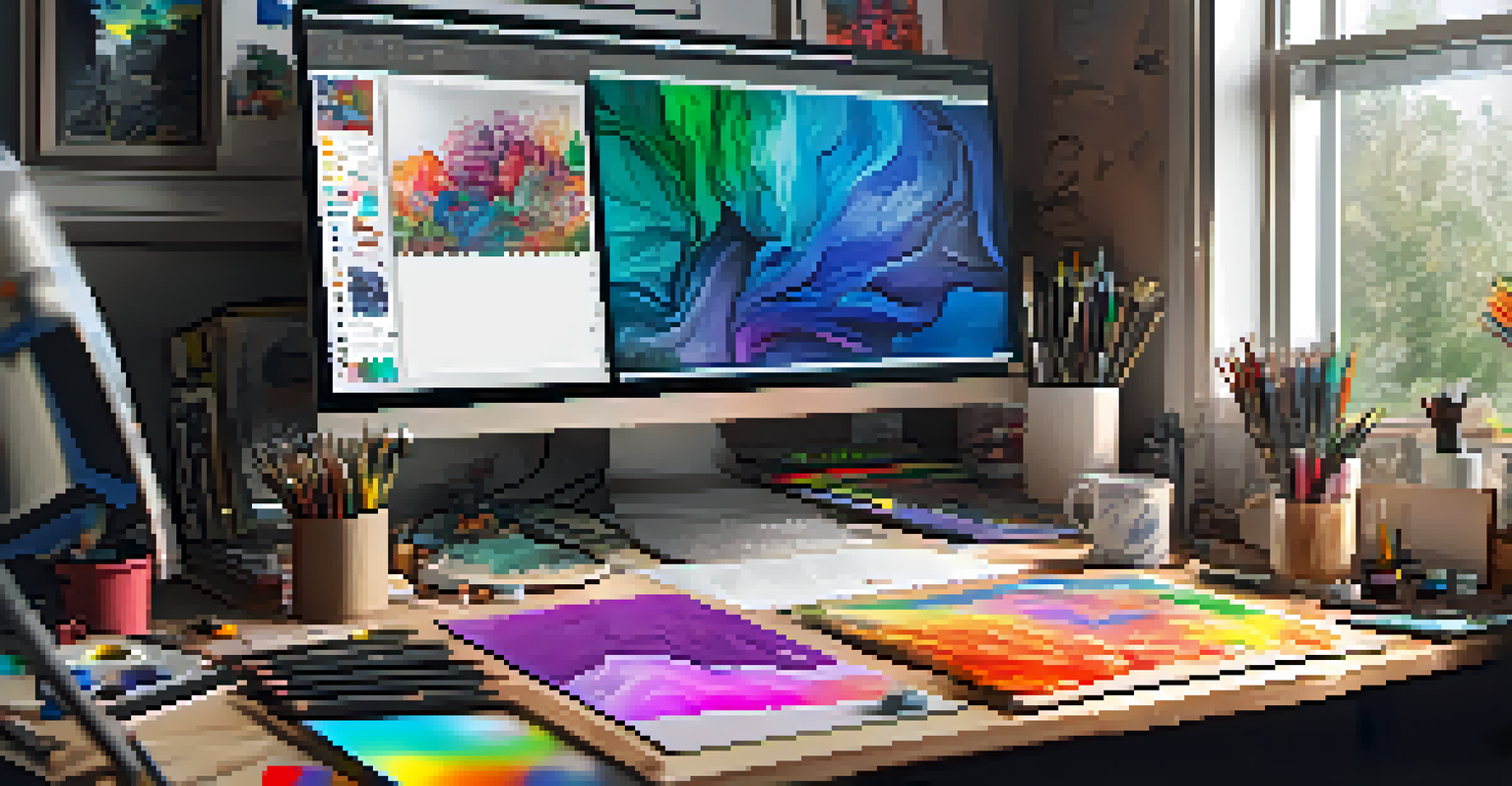Understanding NFTs: The Future of Digital Scarcity and Ownership

What are NFTs and How Do They Work?
NFTs, or Non-Fungible Tokens, are unique digital assets that represent ownership of specific items, whether they are art, music, or virtual real estate. Unlike cryptocurrencies like Bitcoin, which are interchangeable, each NFT is one-of-a-kind, making them perfect for representing digital scarcity. This uniqueness is secured through blockchain technology, ensuring that ownership and transaction history are transparent and immutable.
NFTs are a way to prove ownership and authenticity for digital assets, creating a new kind of value in the digital economy.
Think of NFTs as digital certificates of authenticity. Just like a painting comes with a certificate proving it's an original, NFTs provide a verifiable proof of ownership for digital content. This opens up exciting possibilities for creators, allowing them to sell their work directly to fans without intermediaries, thus keeping more of the profit.
In essence, NFTs are revolutionizing how we think about ownership in the digital world. They empower artists and content creators, while also giving buyers a way to invest in and collect digital items that have value. As the digital landscape continues to evolve, understanding NFTs becomes crucial for anyone interested in the future of digital ownership.
The Role of Blockchain in NFTs
At the heart of NFTs lies blockchain technology, which acts as a decentralized ledger that records all transactions. This means that when an NFT is created, bought, or sold, the details are securely logged on the blockchain, making it nearly impossible to forge or replicate. This level of security is a game-changer for digital assets, as it instills trust in buyers and sellers alike.

Imagine a library where every book has its own unique entry in a catalog that anyone can access. This catalog is updated in real-time and cannot be altered without consensus from the entire community. That's how blockchain operates, ensuring that every NFT's history is transparent and verifiable. It provides a sense of security that traditional ownership methods often lack.
NFTs Redefine Digital Ownership
NFTs provide a unique way for creators to sell digital assets directly to consumers, ensuring authenticity and ownership.
Moreover, blockchain enables artists to embed royalties in their NFTs. This means that every time their work is resold, they receive a percentage of the sale. This innovative feature not only benefits creators but also fosters a more sustainable ecosystem within the art and entertainment industries, promoting fair compensation for artists.
The Impact of NFTs on Artists and Creators
For artists and creators, NFTs represent a revolutionary shift in how they monetize their work. In the past, many artists struggled to get fair compensation for their creations, often relying on galleries or record labels that took a significant cut. With NFTs, creators can sell directly to their audience, keeping a larger portion of the profits while also gaining more control over their work.
The potential of NFTs is not just about art; it's about unlocking new experiences and ways of ownership across various industries.
Consider an independent musician who can release their album as an NFT. By doing so, they can not only sell the music but also offer exclusive content, like behind-the-scenes footage or personal messages to fans. This direct engagement creates a more personal connection and enhances the value of the digital asset, making it appealing to fans who want to support their favorite artists.
Additionally, NFTs allow for innovative ways to engage with fans. Artists can create limited edition pieces, offer special experiences, or even collaborate with other creators to produce unique NFTs. This opens up a new realm of possibilities that can lead to increased visibility and revenue for artists, fundamentally changing the landscape of creative industries.
Understanding Digital Scarcity in the NFT Space
Digital scarcity is a core principle of NFTs that sets them apart from traditional digital content. In a world where digital files can be copied and shared endlessly, NFTs introduce the concept of ownership through limited editions and unique tokens. This scarcity creates a perceived value, much like how limited edition prints of a famous painting can command higher prices than the original.
Think of it like a concert ticket. Even though the same concert can be streamed online, owning a physical ticket to that event makes it special and often more valuable. Similarly, owning an NFT gives collectors something unique, creating a sense of exclusivity and desirability in the digital realm.
NFTs Revolutionize Digital Ownership
NFTs enable unique digital ownership, allowing creators to sell directly to fans while ensuring scarcity and provenance through blockchain.
As more artists and brands embrace NFTs, the understanding of digital scarcity will continue to grow. This shift could lead to new economic models in the digital space, where value is assigned not just based on the content itself but also on its rarity and the story behind it. It's an exciting evolution that challenges our traditional notions of value and ownership.
NFTs in the Gaming Industry
The gaming industry is one of the most promising areas for NFT integration, as it allows players to truly own their in-game items. Traditionally, items purchased in games are controlled by the developers, meaning players don't have real ownership. With NFTs, players can buy, sell, and trade items on external marketplaces, creating a sense of real-world value for their digital achievements.
Imagine spending hours leveling up your character and acquiring rare weapons in a game, only to find out you don't really own those items. NFTs change that narrative, allowing players to retain ownership and even profit from their hard work. This brings a new level of engagement and investment into gaming, as players can now view their in-game accomplishments as valuable assets.
Furthermore, NFTs can facilitate cross-game functionalities, where items can be used across different games or platforms. This interoperability can enhance the gaming experience and foster a community where players can trade and showcase their collections. As the gaming industry evolves, NFTs are poised to play a pivotal role in shaping the future of interactive entertainment.
Challenges and Criticisms Surrounding NFTs
Despite the excitement surrounding NFTs, there are several challenges and criticisms that must be addressed. One significant concern is the environmental impact of blockchain technology, particularly proof-of-work systems that require extensive energy consumption. As more people engage with NFTs, it's crucial to find solutions that minimize the carbon footprint associated with their creation and trading.
Additionally, the NFT market has been criticized for its speculative nature, with some buyers treating NFTs as quick investments rather than appreciating them as art or collectibles. This has led to wild fluctuations in prices and raised concerns about the long-term sustainability of the market. Buyers need to approach NFTs with caution, ensuring they understand the value of what they're purchasing.
Blockchain Ensures Security and Trust
Blockchain technology underpins NFTs by providing a transparent, immutable record of ownership and transactions, fostering trust among buyers and sellers.
Moreover, the issue of copyright and ownership rights is still murky territory. There have been instances of artists' work being sold as NFTs without their consent, leading to legal disputes and ethical dilemmas. As the NFT space matures, establishing clear guidelines and protections for creators will be essential to foster a fair and equitable environment.
The Future of NFTs: Trends to Watch
As we look toward the future, several trends in the NFT space are worth noting. First, we can expect to see increased adoption by mainstream brands and businesses, as they explore ways to engage their audiences through unique digital experiences. This could lead to more innovative marketing strategies and collaborations that leverage the power of NFTs.
Moreover, the integration of augmented reality (AR) and virtual reality (VR) with NFTs is on the horizon. Imagine being able to showcase your NFT art in a virtual gallery or using your NFT collectibles in a VR game. These immersive experiences can enhance the value and appeal of NFTs, pushing the boundaries of what's possible in the digital landscape.

Finally, as the technology matures, we may witness the emergence of more eco-friendly blockchain solutions, addressing environmental concerns. Innovations that prioritize sustainability will be crucial in ensuring the longevity of the NFT market. The future of NFTs looks bright, and it's an exciting time to be part of this evolving space.